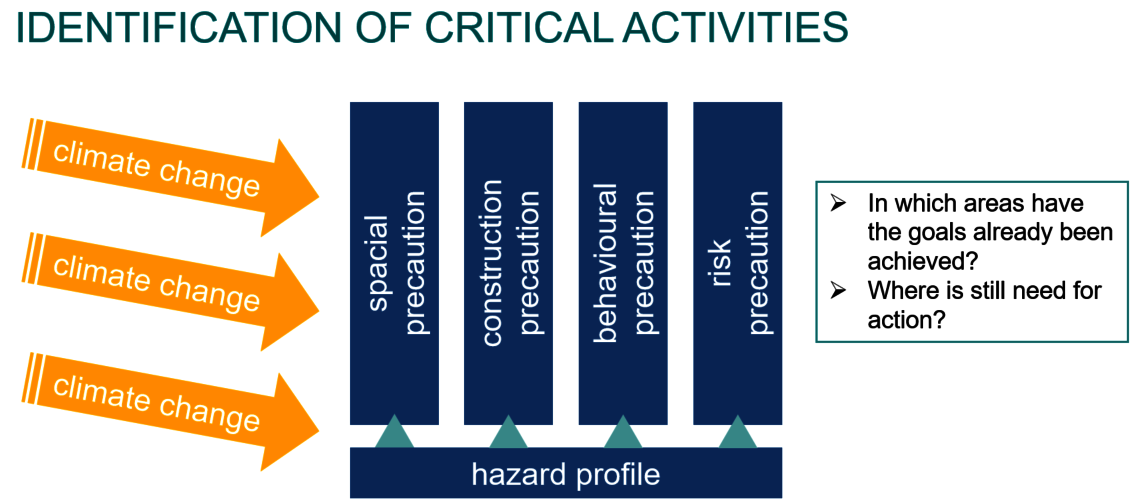What are the aims and purposes of the natural hazard and climate change check?
Natural hazard preparedness and adaptation to climate change are necessary measures to be prepared for climate change and disaster risk scenarios. Municipalities are important and central actors in precautionary measures and are the central point of contact when it comes to safety.
The aim of the natural hazard check is to raise the awareness of municipal decision makers and actors for locally relevant natural hazards and climate risks, and to strengthen risk awareness and the capacity within the sphere of influence of the municipality. This method identifies existing potentials and preparedness of the municipality, as well as possible needs for action for the four pillars of precaution (spatial, constructive, behavioural and risk based). This way, the community is better prepared for natural hazards and the challenge of adverse climate change effects.

The focus of the natural hazard and climate change check is on strengthening the competence and capacity of the municipality in the context of self-precaution. The precautionary check further intensifies the internal communication and coordination processes between the various departments and actors in the community. Moreover, it offers the possibility of a comprehensive and structured discourse on issues related to natural hazards and risks. Risk reduction through structural protection measures is deliberately excluded from the natural hazard check.
